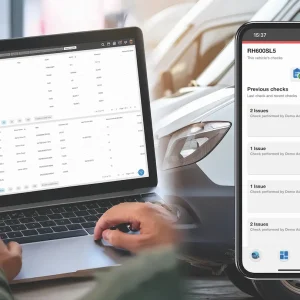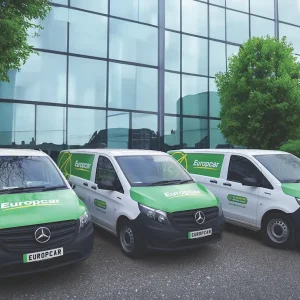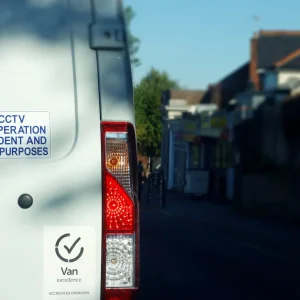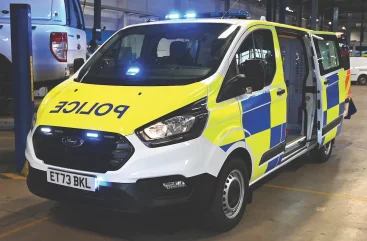
Tim Sykes is head of fleet services for Cheshire Constabulary, which is in the north west of England, surrounded by five other regional forces who work closely together. Sykes is Oldham born and bred and still lives in that neck of the woods in Bury, north Manchester. The dedicated fleet manager commutes into Cheshire every day to meet his 28-strong fleet team, including fleet services manager Julie Cradock, who he describes as the driving force behind all fleet change and improvement.
With 740 vehicles under his watch – including cars, vans, HGVs, motorbikes, trailers, bicycles, outdoor motors and generators – Sykes’ role is as varied as the fleet he manages.
From technician to head of fleet: A career built on the workshop floor
Sykes has led Cheshire Constabulary’s fleet services since 2018, following a 25-year career with Greater Manchester Police. “I started as a technician back in 1985 and gradually worked my way up to workshop manager,” he says. “Cheshire was the next step – a head of fleet role – and I was lucky enough to be appointed.”
Now based in a quieter, more rural part of the country, Sykes appreciates the difference it makes – not just to the driving experience, but to the condition of the vehicles themselves.
“I work in a wonderful environment, surrounded by fantastic scenery,” he says. “There’s very little urban congestion here, but with lots of town driving, fast roads and the largest number of motorway miles in any UK county, we have a very specific set of challenges maintaining our fleet.”
Compared to neighbouring forces in more built-up areas, Cheshire’s fleet escapes the punishing effects of city driving. “Urban environments can really take their toll,” Sykes explains. “We don’t have as much stop-start traffic, but our numerous towns, speed bumps, potholes and lots of heavy braking on our fast roads – they all accelerate wear. For forces like Manchester and Merseyside, diesel engines don’t always get the chance to run hot, which leads to emissions issues. We’re fortunate we don’t have that problem to the same extent.”
On patrol and under control
Cheshire Constabulary carries out most of its fleet maintenance in-house at its fully equipped on-site workshops. “We have specialists in a range of areas,” says Sykes. “Our team handles everything except collision repairs, which we currently outsource.”
The 28-person fleet team is split between operations and workshop, where hands-on maintenance occurs. Their mission is straightforward: to provide safe, reliable and fit-for-purpose vehicles for officers and staff.
That starts with protecting the people who maintain them. “Health and safety are critical,” Sykes says. “It’s manual work, so we’re constantly reviewing procedures and updating training to minimise risks – from slips and trips to strain injuries. We look after our people, and in turn, they look after the fleet.”
Keeping maintenance in-house also gives the team control and agility. “We still have to send vehicles back to a dealer for warranty work, but there are inevitable delays with dealers,” he explains. “With our own workshops, we decide what gets done and when – which helps us keep the fleet on the road.”
A different kind of wear and tear
Although the streets of Cheshire are less punishing than those of nearby counties, all police vehicles endure a different kind of usage than the average road vehicle, so the force believes in preventative maintenance. “That means we don’t just wait until something breaks – we anticipate problems before they cause issues,” says Sykes. “Even our lowest-mileage vehicles are serviced at least once a year, but most come in every 8,000 to 10,000 miles. Basically, whatever time frame or miles the manufacturer advises for services, we’ll do it at least twice as often.”
This proactive approach ensures no vehicle goes too long without attention, regardless of how much it’s used. “The public always asks if our cars are souped-up to go faster,” Sykes laughs. “The truth is, it’s not speed that’s the issue – it’s stopping. Brakes, steering and suspension components take a serious beating. We change brake discs and pads at almost every service.”
Accidents are another regular reality. “We see multiple collisions every month across the fleet,” he says. “Some are our fault, some are members of the public’s fault, some are criminals’ fault, but the result is the same – more demand on
the workshop, and crucially, on our over-stretched budgets!”
That’s why maintaining control over how and when maintenance happens is key. “Outsourcing might look cheaper short-term, but long-term it can slow us down and cost more,” Sykes says. “We’ve got a brilliant facility and the space to do things properly, so why wouldn’t we?”
The benefits of buying
Cheshire Constabulary’s strong, long-standing relationships with manufacturers allow them to purchase vehicles at significantly reduced rates, making buying more cost-effective than leasing. “We buy outright, maintain vehicles throughout their lifespan and sell them at auction when they reach end-of-life. The money goes straight back into the fleet budget,” says Sykes.
Buying also enables customisation. About 50% of the fleet is converted into fully equipped police vehicles, while the rest are used as-is, primarily unmarked GP cars. The force has a dedicated staff member managing conversions, a shift that has improved efficiency. Each conversion follows a detailed spec developed over the years, covering everything from upgraded brakes and Goodyear tyres to installing police technology like emergency lights, sirens and control systems. To protect upholstery from wear, they fit seat covers from day one, ensuring longevity because of all the equipment officers need to wear, which can cause damage over time.
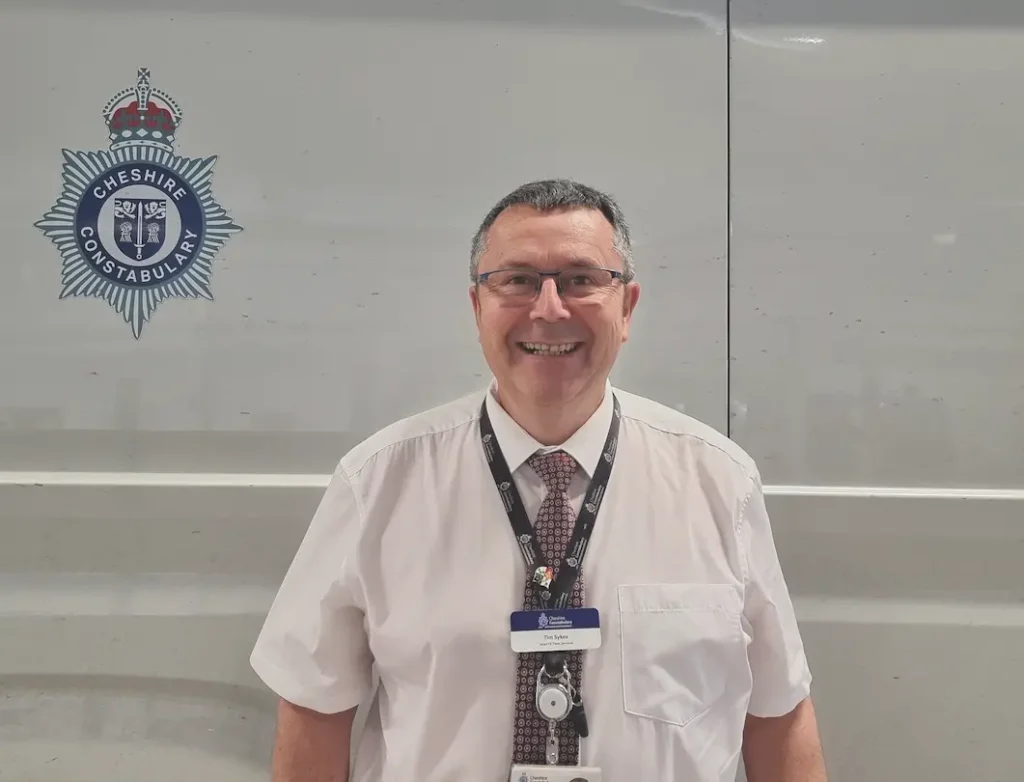
A data-led approach
Every new vehicle in the fleet is fitted with telematics, enabling the team to track location, usage and optimise efficiency. “Telematics have been one of our best investments,” says Sykes, allowing a data-driven approach to vehicle allocation based on real usage rather than default numbers.
An example of this was when under the Boris Johnson-led Conservative government, the Police Uplift Programme meant over 300 new officers were added to Cheshire Constabulary without any extra funding for vehicles. “Telematics allowed the fleet to absorb the increase by redeploying existing vehicles effectively, eliminating the need for additional [vehicles],” Sykes adds.
The fleet team reviews the 30 most and least-used vehicles each month to ensure maximum value from each asset. Telematics also provides real-time feedback to drivers, encouraging smoother driving to reduce wear and fuel consumption. Beyond location tracking, telematics gives insight into vehicle usage patterns, including time spent at key locations. This data helps identify which vehicles are best suited for transitioning to electric, factoring in charging logistics and idle times. “Telematics is not just about tracking; it’s about future-proofing,” says Sykes.
Funding the future
The biggest challenge facing the Cheshire Police fleet, and many others, isn’t operating EVs, but funding the transition. The upfront cost of EVs is significantly higher than traditional vehicles, but the real barrier is the infrastructure needed to support them.
With over 30 sites across Cheshire, many in older buildings – such as Victorian police stations – upgrading to handle modern charging infrastructure is costly. “The existing electricity supply can’t cope with the increased load, and upgrading it is a major undertaking,” says Sykes.
To address this, the fleet uses telematics data to analyse vehicle usage patterns and identify the best locations for chargers. “It helps us make smarter decisions about where to install chargers and manage charging schedules,” he adds.
However, the real hurdle is financial. “There’s simply not a pot of money waiting to fund this transition,” Sykes explains. “We can manage EVs, but without investment in infrastructure, the shift to electric will remain our biggest challenge.” The fleet currently operates a mix of diesel, petrol, hybrids and a small number of EVs. The next batch of response vehicles will be another 60 hybrids to add to last year’s 60 new hybrids, replacing older diesel models, a positive step toward electrification.
Manufacturers are already moving towards electrification ahead of the UK Government’s ban on new internal combustion engine vehicles. “The timeline has shifted multiple times, but manufacturers were already planning for this,” says Sykes.
“While the current government originally set a 2030 phase-out date, with a five-year extension for hybrids, the previous government tried to push ICE back to 2035, and then the current one moved it forward again to 2030. But, to be honest, manufacturers didn’t really take much notice – they were already following global strategies to electrify their fleets. So, we’re already seeing a drop in the availability of the types of high-performance vehicles we’d traditionally buy for police use.”
The transition to EVs for Cheshire Police will be gradual, with the force testing demonstrator vehicles and collaborating with other forces. Sykes points to Police Scotland and the British Transport Police as examples of successful EV integration.
He says: “Police Scotland has around 1,000 EVs, and we’ve learned a lot from their learning journey. They’ve helped us understand how to build out the infrastructure and manage charging for an emergency fleet.”
The fleet will continue to expand its use of electric vans, mirroring the approach taken with cars. While there are challenges in converting commercial vehicles to electric, the team doesn’t face the same concerns as parcel delivery companies that require extended range for long-haul operations. In Cheshire’s case, the vans are used similarly to the cars, with no need for additional range: “Our customers won’t be using the vans for high-mileage parcel delivery,” says Sykes. “As long as the vans meet the role’s requirements, we don’t face any additional challenges in making the switch.”
Sykes believes EVs are suited to policing. “The nature of our driving lends itself to EVs, once we’ve got the charging sorted. And from a return-on-investment perspective, the biggest gains will come from our most-used vehicles – our marked response cars. Those are the ones flying around the county answering 999 calls. They burn through the most fuel, so switching them would give us the biggest benefit.
“But even if everything stayed exactly as it is, I don’t believe we’d be allocated the necessary budget to replace our existing ICE vehicles,” says Sykes. “The cost of outright purchasing electric vehicles, combined with the infrastructure required to support them, makes it incredibly difficult.”
Although the force applies for funding every year to replace vehicles, increasingly it must make what it has last longer. “It’s a constant balancing act – evaluating whether a vehicle can be stretched another 12 months, whether it’s still safe and whether it’s cost-effective. That’s been our reality for the past five years, and it’s now part of our ongoing process.”
Beyond that, Sykes explains Cheshire Police has its own internal continuous improvement initiatives, including something it calls Fleet Forward. “We’re always looking at how to improve – not just in how we manage the fleet, but how we run our workshops. We set four priorities for the workshops each year: first is health and safety, second is quality standards and culture, third is performance and fourth is whatever major project we’re tackling that year.
“And we’re always pushing to improve, even if it’s just by 1% or half a percent at a time. It’s the marginal gains approach – small improvements that build over time, over a hundred changes so far. That mindset drives everything we do.”

